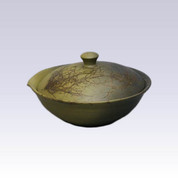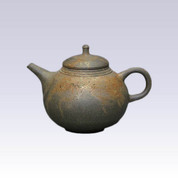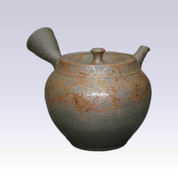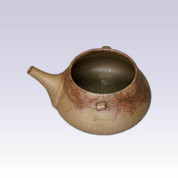- Home
- TEAWARE
- Teapot Kyusu
- Tokoname Hohin JIN Algae Squeeze 40 ml
KYUSU TEA POT
Pottery / Ceramic
Tokoname Hohin JIN Algae Squeeze 40 ml
- PRICE:
- $125.99
- SKU:
- VY-K6M2-7YKN
- Availability:
- We will ship within 3-5 days after receiving cleared payment.
- Shipping:
- Calculated at checkout
| Shipping: | Standard Int'l Shipping(2-7 days) Item location: Chuo-ku, Tokyo, Japan |
|---|---|
| Delivery: |
Seller ships within 3-5 days after receiving cleared payment. |
| Payments: |

|
| Returns: | Please refer the return policy in detail. |
Product Description
TOKONAME-YAKI : Pottery / Ceramic
Tokoname yaki is counted as one of Japan's six old kilns.
The production of tokoname ware dates back to the Heian period (794-1185). Back then, tokoname yaki was used for Buddhist related purposes. When the practice of tea ceremony spread in the Muromachi period (1338-1573), tea related products such as tea bowls and flower vases were made. In the Edo period (1600-1868), wares for everyday use were made in addition to tea wares. In the later years, pipes, tiles, and even toilets were made. The wide range of products is a result of the flexibility in the tokoname artist, producing wares to meet the needs of people in each point of the history.
The special feature of tokoname yaki is the red clay (shudei). Clay is mixed with iron oxide without the use of glaze. This iron results in the red color distinct to tokoname yaki. It is said that the more you use the ware, the more the surface of the ware shine. Although the red clay tokoname yaki is the representative ware today, it first appeared in the late nineteenth to twentieth century, a relatively new ware.
There are two types of tokoname yaki: ware with smooth surface (often seen in kyusu) and ware with earthy, rough texture (jar or vase) made with clay found in the Tokoname region that contains more iron.
Tokoname wares are mostly unglazed. But green colored tokoname ware may be found at times. This green color is a result of melted ashes that stick to the pottery in the kiln and became glaze. This type of glaze is referred to as shizen-yuyaku, or natural glaze.
HOHIN:
The kyusu teapot without a handle, basically it is used for a high-end tea that you would make tea with a little amount of tea leaves such as Gyokuro etc. You do not use it for black tea or Chinese tea.
Since it has no handle, you may be worried about a burn but the high-end tea like Gyokuro's steep temperature is low (50-60 degrees) so you don't need to worry about that. Also, it is suitable for traveling and outdoor activities as it has no handle. There are some various views about its origin but it's based on 'Gaiwan' from China.
In general, we say 'make' tea for Kyusu teapot and 'squeeze out' tea for Hohin. I believe that this was came from 'enjoying the umami of tea by making a little amount of tea with a low temperature carefully'. It's easy to deal with it but this tea utensils is rather for professional (for professional use/professional).
PRODUCT INFO
PRODUCER (Artist)
- JIN
DESIGN
- Algae
STYLE
- Tokoname-yaki (Aichi Prefecutre)
MATERIAL
- Pottery / Ceramic
MESH TYPE
-
VOLUME
- 40 ml
*Measurements above are approximate
CAUTION
- Do not use in dishwasher or microwave & polishing powder.











